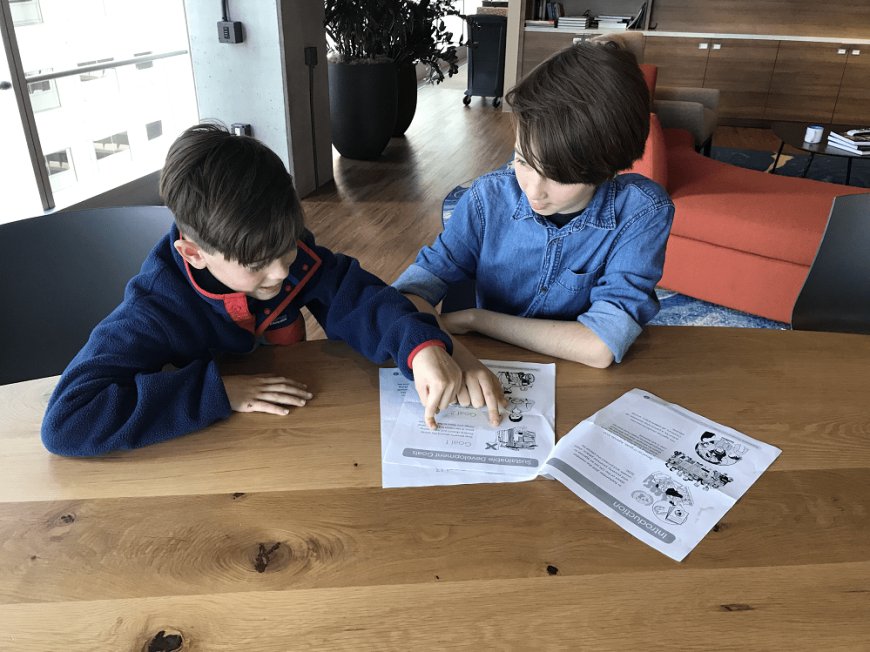Learning responsible consumption with children: checklist
the future is to tell children how to save the planet and become eco-friendly. Learning responsible consumption with children.

Mankind is increasingly thinking about the ecology of our planet and conscious consumption. The best investment for the future is to tell children how to save the planet and become eco-friendly. Learning responsible consumption with children.
Ecological education of students of the New Ukrainian School lays the appropriate foundation for children to learn responsible consumption and love of nature as early as possible.
We tell you where to start if your children have decided to be more environmentally friendly and how to teach them this in general.
What is responsible consumption
Responsible consumption is when you buy only those things that you do not have, and you need them for a quality life.
That is, buying a twentieth plate just because it is very beautiful is not about responsible, but about impulsive consumption, which is based on emotions, not common sense.
Criteria for responsible consumption
Responsible consumption is reasonable consumption when you make wise choices.
The following factors are important for responsible consumption, in particular:
I already have such a thing;
It was made irresponsibly - the environment, animals and birds were affected, child labor was used or people were paid unfairly little for their work;
- The price does not correspond to quality;
- The thing is of poor quality, it will not serve me for long;
- The thing cannot be recycled after use;
- This item cannot be given to anyone after use.
These criteria will help to make the right choice towards responsible consumption.
Also, thanks to them, you can explain to anyone the basic principles of responsible consumption when shopping.
How to teach a child to be environmentally responsible
As the expert explains, it is necessary to communicate with the child about responsible consumption from an early age.
However, expect a more or less conscious analysis of the choice should not be earlier than 7-8 years. At this age, the child is already able to analyze future purchases.
For example, you can offer to move away from emotions for a while and focus on the rational part of the cost. And often thanks to this analysis comes the decision: "This thing the child does not need."
In the supermarket, the emphasis should be on the packaging in which a certain product is stored.
The task of adults is to tell the child about the benefits of packaging that can be recycled after use.
In this way, the child will not demand all the yoghurts on the shelves from the parents, but will know that the family buys yoghurts only from those brands that care about the environment and the future of the used plastics.
That is, the refusal of certain purchases must have an explanation and meaning.
Is it worth buying new toys?
This is the most difficult question, because children lose their sanity when they see shelves full of Interesting toys - and they are quite understandable!
Must Read: Migraine in children and adolescents “ causes, symptoms and treatment
Before you go shopping, you can still at home:
- Choose the desired toy;
- Discuss the budget.
Parents can help direct the child's desires in the right direction, analyze the toy through the above criteria of responsible consumption.
However it is not necessary to refuse the child too actively, to devalue its choice and desire, to deprive of pleasant emotions. This is almost a jeweler's job: both to effectively analyze the purchase together, and not to upset the child by refusing.
How to buy new clothes?
Small children do not care about the brand of clothes she wears. The main thing is comfort and protection.
Therefore, the expert advises parents not to play with changing dolls. Instead - to separate their own pleasure and the rational need to buy clothes for the child.
Responsible consumption also comes from resources for selling your own things, where you can share clothes and look for quality things that other parents sell.
Adults should form a child's habit of analyzing purchases: search for the most information about it on the Internet, read reviews and criticism, analyze the best alternatives. So the child will learn to "sift" his choice through a number of the above factors.
But the best example is parental behavior. If during shopping they will explain why they buy a certain thing and refuse another - it will become the norm for the child.
"Sometimes I see parents spoiling a child with excessive consumption. For example, when a father buys a bright balloon for a child that the child did not ask for.
They passed by - and the father wanted to please his son or daughter. But the child takes that ball without feeling satisfied, perceives it as something accessible and ordinary, although the ball itself can be expensive ".
Responsible consumption is part of daily education. In other words, it is a behavior and a certain culture that parents form and help the child to master it properly.
Only environmentally responsible adults can raise a child who thinks about the consequences of consumption and understands his important role as a consumer.
